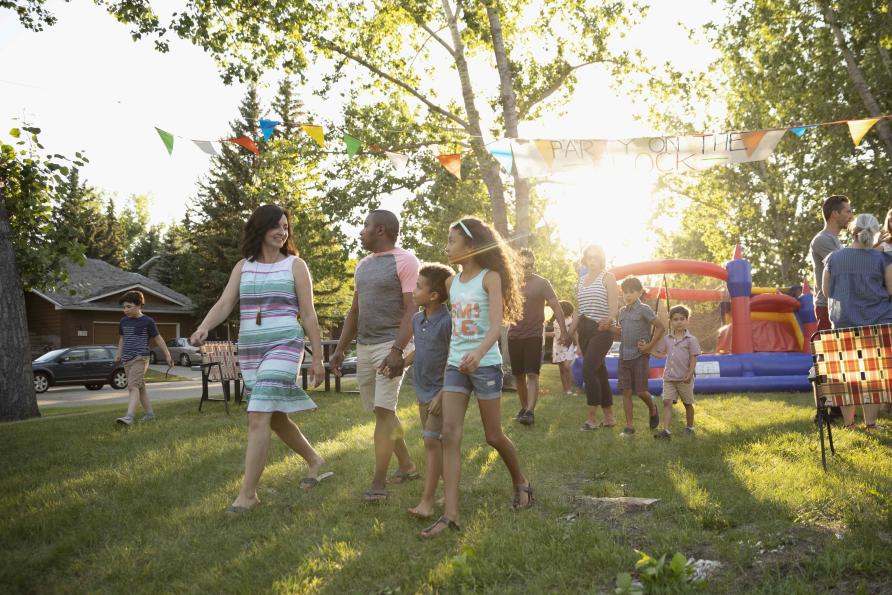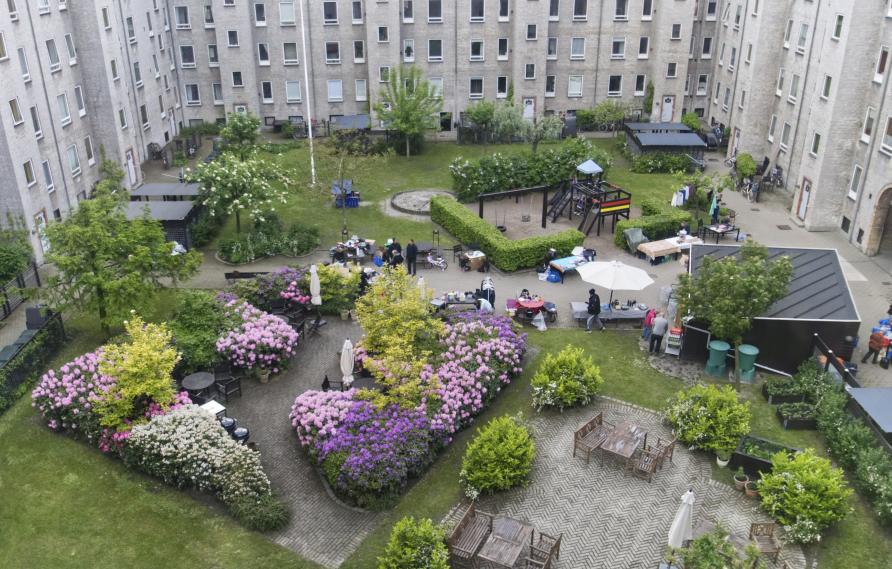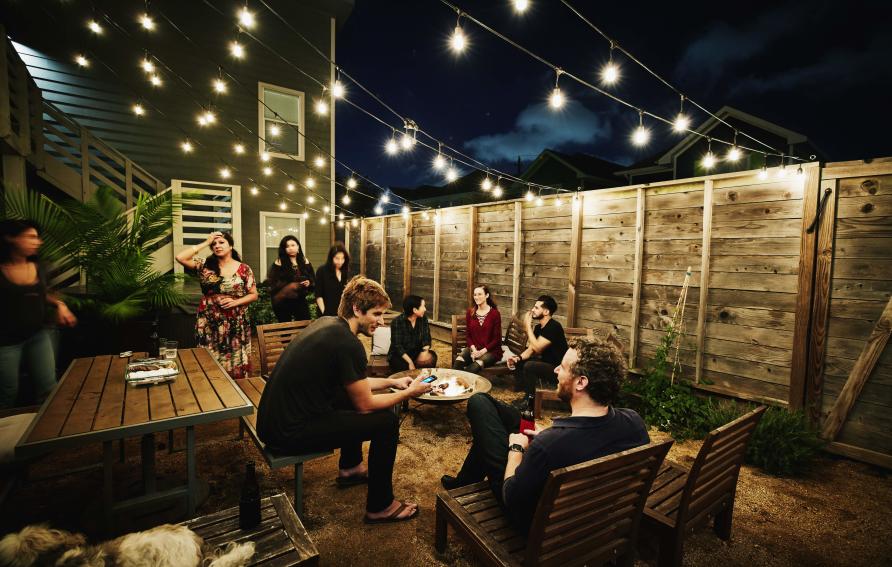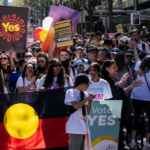Lovability versus liveability: what big data tells us about our neighbourhoods

Imagine a place that you love to spend time – perhaps it’s your local café, a neighbourhood where you grew up or a holiday spot.
When you imagine these places, it’s usually not the building heights or street widths that come to mind but rather the memories, experiences and social interactions you had there. When it comes to shaping great neighbourhoods, it’s these softer values – like behaviour and experience – that matter most.
This is lovability.

As opposed to liveability, which describes access to physical attributes like schools, shops, jobs and transport – lovability is about how we feel. And this is a critical pillar of our health and wellbeing.
Our levels of social interaction affect everything from our mental health to life expectancy. At a time when one in three Australians don’t know their neighboursand loneliness is as likely to kill you as smoking or heart disease – lovability couldn’t be more important.
The Soul of the Community study, undertaken by the Knight Foundation, surveyed 26 neighbourhoods across the USA over a three-year period to determine the factors that attach residents to their communities, as well as the role of that community attachment in an area’s economic growth and wellbeing.
Significantly, the study found that the lovability factors (aesthetics, sense of openness or welcome-ness, social offerings and social capital) were not correlated to liveability.
Similarly, comprehensive analysis by the Brookings Institute of Innovation Districts showed that to get a place to work in terms of improved economic performance you need the right mix of public and private spaces, events, social diversity, leadership and investment. The intangible aspects of place, like social connection and vibrancy, aren’t just nice to have – they’re critical for improving economic performance.
Having established that lovability is important to health and wellbeing and economic performance, the key question remains – how do you measure it? What’s the right mix? What works and what doesn’t?
Imagine if the success of a neighbourhood was determined by the experiences we value the most; social life, cultural activities and social interaction, rather than only physical attributes like traffic flows and materials? And what if we had reliable data to prove it?

Measuring what matters
Having spent more than a decade in urban design and place-making, the lack of data and metrics about what makes places work has been a source of much frustration. That’s why, along with co-founder Jessica Christiansen-Franks, I established Neighbourlytics, a social analytics platform for neighbourhoods.
The effective digitisation of our lives now means that as we post, review, check in and tweet, we are creating digital footprints of our cities – real-time snapshots into the social life of our neighbourhoods.
Inspired the volume of data collected from over 15 digital sources, Neighbourlytics creates social data for neighbourhoods, helping city-makers to better understand the local life of the neighbourhoods they plan, create and manage.
Over the past year, we’ve got to know this data set and have defined three key areas where social data offers tangible and dynamic insights for understanding neighbourhoods: local places, social life and community values.
Local places
From banks and bakeries to playgrounds and parks, we can map out where people live, work and play. Social data offers a complete view of a place’s economic and community assets.

It picks up the things we see – like main street shops or a local park. But also the things we don’t see, like a parent’s group that meets on Tuesday afternoons in the park, or home businesses working from the third floor of an apartment building.
One of the surprising findings has been looking into economic opportunities.
In greenfield developments (which is undeveloped land in a city or rural areas), we often see an unexpectedly high volume of home businesses, start-ups and micro-entrepreneurs in what otherwise looks like a residential suburban street.
An analysis of 10 vibrant neighbourhoods like New York’s Brooklyn, Auckland’s Wynyard Quarter, Barcelona’s 22@ precinct and Portland’s Pearl District shows that 60 per cent of all places recorded (a place being a business, park or community facility) were destinations like bars, dining, cafes, attractions or accommodation.
These are neighbourhoods which have significantly increased the number of jobs and economic productivity in the last decade, yet we see that the social life is their dominant feature.
This is consistent with the theory on innovation districts where you need a critical mass of activity in close proximity – close enough that people’s ideas can ‘collide’ relatively effortlessly – to drive economic growth.
Social life
A neighbourhood’s social life is described through its rhythm of activities, events and programs.

Alongside local places, social data picks up events, activities and programs. What’s most interesting is that the social data reveals how places function differently over time, how they are different during the day or night, on a Wednesday or a Sunday or in summer or winter.
These are insights that are very difficult to glean from traditional static data sources like surveys and focus groups.
In this same analysis of these active neighbourhoods, we saw that they had an average of 12 events per day (within a one kilometre radius) and a lot of diversity of activity.
Similarly, an analysis of social data across Cairns revealed how local church and community groups were involved in activating neighbourhoods, and how the levels of activity varied between neighbourhoods.
Community values
The Knight Foundation research shows that identity and belonging is one of the central tenants of place attachment.
Understanding this can be challenging. From social data, we can identify key themes that express neighbourhood identity. Established neighbourhoods typically demonstrate a collective identity (a large number of social posts are about the place itself) while newer neighbourhoods show very few posts about the actual neighbourhoods, with identities are based around individuals’ interests.
In established neighbourhoods – like Collingwood or Carlton in Melbourne – we see a strong collective identity emerge with the majority of social chatter describing the neighbourhood itself.
While in greenfield areas, the social chatter describes activities like family activities, sporting events, pets or cooking, rather than the neighbourhood itself.

You can’t manage what you can’t measure
With millions of data points added every day, we’re at the tip of the iceberg in understanding what social data can tell us about our neighbourhoods.
The most exciting prospect is its ability to help us understand neighbourhoods at scale, which has been a barrier for many traditional data collection methods which rely on surveying.
Our goal is to change the way we measure city performance, making lovability as simple to measure and understand as liveability, helping city-makers create, plan and build neighbourhoods that people love.
Imagine Australia experiences a population explosion – what could our cities in 2033 look like? This is the hypothetical scenario of Ali Moore’s This is Not A Drill series, made in partnership with the University of Melbourne, Asialink, the Wheeler Centre and the ABC. This episode of the series will air on ABC News on Sunday, 18 November September at 10pm. This article was published by Pursuit.
Lucinda Hartley is an Adjunct Senior Fellow in the Faculty of Architecture at the University of Melbourne and the Co-Founder of Neighbourlytics. An urban designer and social entrepreneur, she has has spent the past decade pioneering innovative methods to improve the social sustainability of cities.













